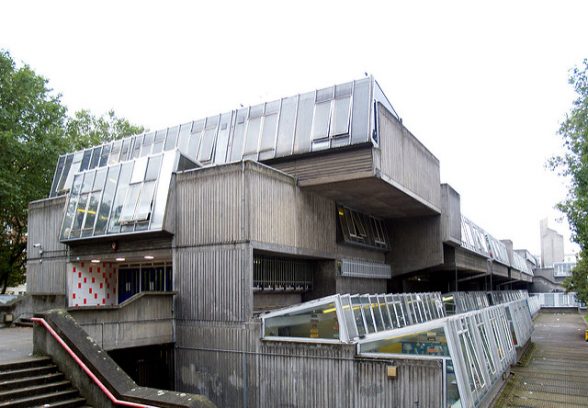This website uses cookies
This website uses cookies to enable it to function properly and to analyse how the website is used. Please click 'Close' to accept and continue using the website.



Pimlico School, London
Status: Destroyed
Type: Education
Architect: John Bancroft, GLC
Location: Pimlico, London
Described as “the most visually forceful building the Greater London Council has yet produced”, Pimlico Comprehensive School opened to initial positive reviews and was honoured with awards from the RIBA and Civic Trust.
It was a noted example of brutalist architecture, constructed of concrete and glass without decorative claddings or ornament. Designed in 1964-65 by John Bancroft of the Greater London Council’s architecture department for 1,725 pupils, Pimlico School was among the last of the LCC and Inner London Education Authority’s programme of large comprehensives.
One reviewer for the Architects’ Journal for 1970 used the term ‘battleship’ to describe ‘this 100-odd metre long, turreted, metallic grey thing lying in its own sunken rectangle.’ It was not only the external appearance but also the overall organisation of the school that reminded the author of ‘nautical architecture’ – for example, the penetration of ‘decks’ by stairs, the clever use of limited space or the form based on volumes stacked on top of each other.
Bancroft decided to sink the school into the deep basements left by the previous buildings on the site. This had the benefit of creating light and space amid the area’s tall Victorian terraces and 1930s flats, with a visual link to St George’s Square nearby. The resulting ‘moat’ also obviated the need for high fences; instead the school appeared to grow out of the ground, with paving and walls of the same concrete as the building itself. Features included high-class facilities for art, music and drama, subjects in which the school excelled, and even a swimming pool.
The problem was that the patent glazing was difficult to maintain, and led to overheating. In 2000, parent governors, who included several architects as well as Jack Straw, then Home Secretary, fended off initial proposals for a replacement school by Ellis Williams as part of a PFI (private finance initiative) that would have seen part of the site – already considered too small – filled with private flats.
But successive governments turned the building down for listing, despite support from the C20 Society and many of the country’s leading architects, including Lord Rogers, and demolition finally began in 2008. The long, sorry saga highlighted British prejudices towards Brutalist architecture and exposed the limitations of both the PFI system and the Buildings Schools for the Future programme that led to the eventual bland replacement building by Architecture PLB.
This text needs adding

Become a C20 member today and help save our modern design heritage.